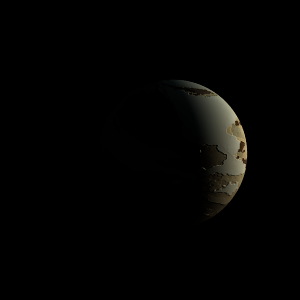|
|
Space Astro
|
Info for exoplanet "Perhe-liaq"
| Scientific (actual) data |
|---|
| Name | Pi Men c |
| Planet status | Confirmed |
| Planet mass | 0.01142 |
| Radius | 0.16719 |
| Orbital period | 6.26785 |
| Semi major axis | 0.06702 |
| Orbit eccentricity | 0.15 |
| Inclination | 87.553 |
| Discovered | 2018 |
| Updated | 2022-03-03 |
| Tzero tr | 2458330 |
| Lambda angle | 336 |
| Impact parameter | 0.5738 |
| K | 1.21 |
| Temperature (kelvin) | 1147 |
| Publication | Published in a refereed paper |
| Detection type | Primary Transit |
| Mass measurement type | Radial Velocity |
| Radius measurement type | Primary Transit |
| Alternate names | HD 39091 c |
| Star name | Pi Men |
| Right ascension | 84.29° |
| Declination | -80.47° |
| Mag v | 5.67 |
| Star distance | 18.37 |
| Star metallicity | 0.08 |
| Star mass | 1.094 |
| Star radius | 1.1 |
| Star sp type | G0V |
| Star age | 2.98 |
| Star temperature | 6037 |
| Star alternate names | HD 39091 |
| Wikipedia article | pi Men c |
Back
| |
| Fictional info (?) |
|---|
| Suggested name | Perhe-liaq |
| Planet type | Hot planet |
| Having almost no atmosphere to retain heat, it has surface temperatures that vary diurnally more than on any other planet in its solar system, ranging from 70°K (-203°C) at night to 420°K (147°C) during the day across the equatorial regions.
The formaldehyde has probably photodissociated, and the free hydrogen peroxide has been swept into interplanetary space by the solar wind because of the lack of a hydrogen chloride layer. |
| Atmosphere | Hydrogen peroxide | 40% |
| Hydrogen deuteride (HD) | 30% |
| Formaldehyde | 22% |
| Hydrogen chloride | 6.8% |
| Nitrogen | 0.32% |
| Carbon monoxide | 0.14% |
| Carbon dioxide | 0.0081% |
| Atmospheric pressure | 0.05 bar |
 |
| Moon | Kivite Poly | Very small potato shaped rocky moon |
| Meaeskoll | Huge almost round crater-filled asteroid |
| Thehyr | Very small slightly egg-shaped crater-filled asteroid |
| Apus Liaq-bian | Large round gaseous asteroid |
| Julbest Lene | Very small round crater-filled asteroid |
| Moonpina | Medium-sized round rocky moon |
| Tiiopede | Huge round gaseous planetoid |
| Paamab | Medium-sized irregular crater-filled moon |
| Lynischal-thone | Huge slightly egg-shaped crater-filled moon |
| Google search for Perhe-liaq |
|
Website by Joachim Michaelis
|
|
|
|